
drtreelove
-
Posts
1,933 -
Joined
-
Last visited
Content Type
Events
Forums
Downloads
Quizzes
Gallery
Blogs
Posts posted by drtreelove
-
-
5 hours ago, SOUTHERNSTAR said:
Sorry I forgot to ask about tobacco extract. The bought some leafs and wonder if we could use it as a insect repellent.
Sent from my SM-A730F using Thailand Forum - Thaivisa mobile app
I don't know about the concentration and effectiveness of the product you are considering. But I wouldn't count on a leaf decoction for much potency or residual effectiveness, unless you have directions for your product or experience that indicates otherwise.
Nicotine, like pyrethins/pyrethrum, is a powerful botanical insecticide, but for a contact kill, not necessarily for residual repellent action. It biodegrades rapidly, and that's why it's organic program compatible.
-
 1
1
-
-
The tree you have is probably "pomelo" Citrus maxima or Citrus grandis. The leaf damage appears to be "citrus leaf miner". It's a moth that lays it eggs, then the larvae hatch and tunnel as they feed, creating the galleries and leaf distortions..
Prevention of new infestations is the best strategy, spraying an organic botanical repellent regularly (once a week) like a neem 'azadirachtin' product.
It's not possible to control the existing larval population without using a systemic insecticide like imidacloprid. But then the insecticide may end up in the pomelo fruit you eat.
There may also be some secondary leaf fungal infection there, I can't really see from the photos. Insecticidal soap may help with moth control, but some soap products will damage the plant. Use a commercially formulated insecticidal soap, or search "homemade insecticidal soap" and follow the precautions and make your own.
Spraying a repellent or insecticide is tricky timing because you don't want to repel pollinators - honey bees.
The damage is ugly, but as the following paper suggests, control may not be necessary.
http://ipm.ucanr.edu/PMG/PESTNOTES/pn74137.html
Don
-
 2
2
-
-
6 hours ago, Singhajon said:
Here's a link that made me think the product was suitable.
The label says the right things, indicating that it is formulated for foliar apps, and it has a lot of goodies. I can't determine what form the NPK components are in, and I question such a high NPK for foliar. I would recommend applying a trial to a small area of unimportant foliage and waiting a week or two to observe for leaf or flower burn or not, before applying to all your trees.
-
 1
1
-
-
On 8/11/2019 at 6:33 AM, Singhajon said:
Am trying Wesco 20-10-30 + trace elements for my tree's, ordered from Lazada 3 x 1Kg 400B delivered.
Do you see any indication that this product is formulated for foliar application? I don' see that on the website, and I doubt it, it's too high in NPK and may burn, may be not be appropriate and may be a waste.
Foliar fertilizer needs to be specifically formulated for foliar absorption, and needs a spreader-sticker. And I use a fulvic acid adjuvant to facilitate absorption.
Look at WESCOs other products under micronutrients menu
http://en.wesco.co.th/15090940/micronutrients
Super Plus, Cyto Green and Spray Tol, these are indicated for foliar use.
I trust the quality of products from Organic Totto in Samut Prakan, although I haven't used their foliar fert products.
https://www.organictotto.com/index.php?lay=show&ac=article&Id=539114098
Standard formulations of the macro-nutrients are not usually appropriate for foliar application. They are not readily absorbed and the amount needed is much more than can be provided by foliar. 20 - 30 years ago it was only chelated micronutrients that could be absorbed through foliar application, but now there are new generation formulations, including urea based N that can be absorbed through stomata and leaf surface, but you have to study and trust the label. In any case it takes regular, preferably weekly applications to really get the benefit of foliar, because so little is actually absorbed with one application. Its best to rely primarily on soil organic matter building and mineralization, with foliar as a supplemental modality, if you have the right products and the spray equipment and technique to get good coverage of upper and lower leaf surfaces. And timing. The rainy season makes scheduling the spraying on a dry day important, to make it stick long enough to get absorption.
I'm in California for the summer season, and frequently recommending and applying foliar fertilization. My primary work is with trees in landscapes and home orchards . As an example, for stressed trees that were in decline, we are implementing a comprehensive rehabilitation program, including water management as primary, soil testing and prescription amendments, beneficial soil microbial inoculations, biological fungicides, IPM and once a month foliar fertilization with a tank mix of products (hard to sell weekly, even in the robust Silicon Valley economy). The attached products, plus a light spreader-sticker, and a high quality fulvic acid product, which is a key development in facilitating foliar absorption. https://buildasoil.com/products/bioag-ful-power.
-
 1
1
-
-
I have a cynical friend who says the answer is: "Close the schools and put the little parasites to work pulling weeds, and we won't need so much Round Up".
-
 2
2
-
-
8 hours ago, IsaanAussie said:
three hazardous herbicides...paraquat, chlorpyrifos and glyphosate,
Chlorpyrifos is not an herbicide. It's an OP (organophosphate insecticide).
-
 1
1
-
-
"Doing some light chopping in soil around our mango trees ( age 3 years ). "
The "chopping" will do more damage to the tree absorbing root system than the grubs will.
-
 1
1
-
-
4 hours ago, soalbundy said:
I have a Lam Yai tree in my garden since 10 years now, it has become very large, lots of leaves but has never given any fruit.
That's another topic. But consider soil fertility and water management.
-
9 hours ago, sunnyboy2018 said:
Brilliant topic! I wonder how the Thai bashers will use this one. Regarding the pest in question. Does it not have a natural predator that you can utilize?
Fortunately you won't find much Thai bashing on this farming forum, only occasional frustrations expressed.
The brilliant aspect of this topic in my opinion, is that the big beetle larvae are not necessarily a pest, if they are not harming plants of economic or aesthetic value. That is the intelligence in the question and the follow up of the OP. Learn what you are dealing with, monitor plants for pest activity. Use preventive and early intervention.
Why kill the grubs if they are just doing their thing in processing raw organic matter and breaking it down for better availability in soil building and plant health. There are billions more beneficial organisms at work in the soil, most we can't see without a microscope. Chemical fertilizers and pesticides do great damage to these beneficials and cause a never ending cycle of chemical dependency. So it's not only snakes and birds you shouldn't kill, but beneficial fungi, bacteria, nematodes, protozoa in the soil, and mini-wasps that parasitize the grubs by ovipositing.
-
 1
1
-
-
11 hours ago, Tagged said:
Is this harmfull to Yang Na and fruit trees? We have alot of grass, and 160 trees of different kind.
And if harmfull, what to do?
Not likely to be harmful to the dicot trees as far as I know. Rhinoceros beetle is mainly a pest of coconut and oil palms. But you should be inspecting/monitoring the trees weekly for pest and disease issues.
The grubs feeding on the organic matter on the soil surface that you show, may or may not be rhinoceros beetle. Have you seen adult beetles? Have you seen any damage on the trees. Are there palms nearby that could be their host plant?
If determined to be a problem, management/control has several possibilities, sanitation being one practical method, means managing wood waste and compost, netting compost piles to prevent adult beetles from flying out to the trees, disposing of downed trees and woody plant parts. There is a biological agent, a fungus that kills larvae, which you can spray on your soil and compost piles to keep the numbers down.
-
 1
1
-
 1
1
-
-
I believe story is in reference to fusarium wilt (Panama disease) in the large commercial monocultures of Cavendish bananas. And not likely to be related to the OP issue.
http://www.promusa.org/Fusarium+wilt
-
example: cigar end rot
https://www.plantwise.org/knowledgebank/datasheet/54408#PreventionAndControlSection
"Control is primarily by sanitation and avoiding damage to host tissues (Meredith, 1960; Beugnon et al., 1970)"
IssanAussie is right, its always best when presenting photos of plant problems, to include pics of the entire plant and the site. Include your geographical location and description of the growing conditions, soil and water management, commercial grow or home garden and how many plants are affected.
-
37 minutes ago, Damrongsak said:
A few possibilities here: https://plantvillage.psu.edu/topics/banana/infos
That's a great paper, thanks for posting.
I don't see the specific disease condition that fits the signs from Stubuzz's plant and I haven't seen this myself. Although from what is shown I suspect a fungal disease. Maybe the "cigar end rot" or similar infection. So following some of the "management" tips for the other fungal disease's presented will be your best bet at suppression.
Management (anthracnose)
Commercially produced fruit should be washed and dipped in fungicide prior to shipping; protect fruit from injury; remove flower parts which can harbour fungus.
Management (cigar end-rot)
Infected flowers should be removed from the plant; bunches should be bagged using perforated polyethylene; chemical control may be necessary in the case of severe infestations.
I don't think you will be able to eradicate the disease from the subject plant without extraordinary measures of systemic fungicide treatment, but you may be able to prevent the spread to other plants by utilizing sanitation, removing the infected plants and plant parts, clean up of infected leaf litter to reduce spore load and reinfection, and addressing the growing conditions, soil fertility and water management. And if you have budget and spray equipment, maybe consider applying a biological fungicide regularly until the growing conditions and fertility can be improved enough to promote plant resistance to disease.
"Banana plants grow optimally at 27°C (98.6°F) and require a deep soil, rich in organic matter which is well draining and well aerated. The plants will grow optimally in soil with a pH between 5.5 and 7.0."
This is hard to achieve if you are starting with an alkaline, heavy clay soil common in many areas of Thailand. I haven't grown bananas commercially, but have always grown them in home gardens at several locations in Thailand. I have been lucky with no serious plant pests or diseases, but I go all out to create best fertility that I can, don't over-water or under-water, once a week deep watering during dry season. I plant in best location that I can for drainage, with composted backfill, mulch heavily, and apply aged or composted manure fertilizer. I don't let stems stand and rot after fruiting, I cut them out and compost them, minimizing fungal stem rot inoculum for remaining plants.
-
 2
2
-
-
-
Try insecticidal soap. Organic program compatible, non-toxic, but protect your eyes. Homemade recipe attached.
-
Handle copper sulfate with care, protect yourself, your eyes and skin, kids, pets, and especially don't contaminate fish ponds, it is extremely toxic to fish. Store it in lock up to prevent accidental exposure by kids or others who may not know the toxic effects of handling or breathing the concentrate.
I have had an excessive exposure to copper sulfate while mixing and spreading soil mineral amendments without eye and respiratory protection. It's no fun.
http://npic.orst.edu/factsheets/cuso4gen.html
http://pmep.cce.cornell.edu/profiles/extoxnet/carbaryl-dicrotophos/copper-sulfate-ext.html
-
 1
1
-
-
It probably isn't realistic to expect an ag dept regional biological control program with parasitoid wasp release, although the DoA has a biological control division.
So for the individual farmer, close monitoring and early intervention with Bt should be considered. I don't have experience with FAW, but I do with other caterpillars and Bacillus thuringiensis is very effective if timed correctly, when early instar larvae are feeding, they have to ingest the bacteria, it's not a contact spray or systemic. It's completely non-toxic and organic program compatible.
I'm in Santa Cruz California right now, monitoring oak moth caterpillar development for timing of Bt spray, in anticipation of a large outbreak. There was a big moth flight in June, eggs were present into first week of July, most have hatched and 1st and 2nd instar caterpillars are feeding now, but damage is not extensive noticeable until 4th and 5th instar. We use the Bt kurstaki strain, with a spreader-sticker and make two applications, two weeks apart.
-
 2
2
-
-
Just noticed this unanswered post. The photos are too fuzzy on my monitor to identify. But are you sure they are a pest? Many insects seek habitat on foliage, but do no damage the host plant.
Unless there is damage associated with these visitors, no need to get rid of them, as birds and lizards and other natural predators may do that for you. Or they will reach a stage in their life cycle and move on.
-
3 hours ago, IsaanAussie said:
I am going to an organic farm on Saturday to have a look at what "experiments" they are doing to combat FAW in the rice crop. It was listed as an issue in the reference material quoted above but I have no idea how serious it is or may become.
Thanks to the OP, stay tuned guys this could become huge!
Where, what region? Isaan. Do they have FAW now or just anticipating the swarm? Please post what experiments are underway.
Are you offering Nutri-tech style agronomy now, with soil analysis? If so it would be a worthy "experiment" as a foundation for their preventive measures.
-
- Popular Post
- Popular Post
On 6/14/2019 at 3:53 PM, canuckamuck said:The majority of the trees we are trying to kill are a creeping type of tree that sends out roots far and wide, which popup wherever, and crowd out whatever you are trying to grow. And the main one I am having problems this year also sends out vines above ground that wrap and choke out the other growth. These vines grow at an incredible pace. For the most part, when we identify a friendly tree that simply grows up and looks nice, we leave it be.
Hey Canuckamuck; I missed your discussion on weed tree control until now. I have had a lot of experience with vegetation management and can offer some suggestions. I hesitate to put it out on the forum because of current public opinion about glyphosate (RoundUp), which is largely due to over reaction to mis-information and inappropriate use and lack of common precautions with pesticide use, resulting in unnecessary environmental and personal exposure. I am putting it out because I believe that educating about spot spraying is better than uninformed broadcast spraying and wide-scale environmental exposure. But glyphosate is the most effective product for this type of spot spray application, and appropriate with discretional use in biorational, least toxic vegetation management program. Better than all the guess work and speculation and more toxic recommendations represented in the preceding posts. BTW, I'm 73 on Thursday, still working, and don't have cancer or any other pesticide related illness that I know of. I've managed pesticide use and safe practices education of employees for a large public utilities Integrated Vegetation Management program. IVM is what you describe of your intention and practices.
Don't use products with other broadleaf week killers, dicamba or 2, 4-D, as they are known to be absorbed by roots of other trees and translocate into non-target trees and shrubs, like your tea plants.
What you do is spot spray onto the target plant cut stumps immediately after making the cut, with a solution of 20 to 25% of the active ingredient glyphosate.
So that means if you start with a glyphosate concentrate that is 48% of the active ingredient, dilute it 50:50 with water. Put it in a small hand held pump up sprayer, or an ironing type trigger spray bottle. Carry that with you when you make the final cuts, and spray directly onto the cut stump surface. Not onto the outer bark or the soil surface, just directed onto the cut stump itself with no major overspray. No need to drill holes.
The substance will be absorbed into the conductive tissue of the plant and translocated throughout the root system, without significant environmental exposure. It won't translocate into plants of other species. Use chemical resistant gloves, long sleeve shirt, pants, boots and socks, and eye protection to avoid personal exposure. The people who are getting cancer from pesticide use, I guarantee are not using these simple PPEs, personal protective equipment and methods of avoiding exposure.
Because of the running root systems of the target vines that you describe, this will probably take a couple of years process.
-
 3
3
-
 1
1
-
Fair warning there on a potentially devastating pest. And some interesting information on preventive management that can apply to other crops and pest issues as well.
On the second day of the e-conference, Paul Jepson (Oregon State University) explained how certain pesticides do more harm than good by killing natural enemies and harming human health (slides). Malvika Chaudhary (CABI) then discussed the various options for biological control, i.e. biological control by introduction, augmentation and conservation (slides).
Several agronomic methods appear to influence FAW
infestation in smallholder conditions e.g., legume
intercropping (not pumpkin!), conservation agriculture,
organic amendments, retention of forest patches(1) Minimum tillage; (2) Mulching;
(3) legume intercropping; (4)
flowering shrubs/trees; (5)
boundary trees; (6) crop rotation;
(7) regular scouting; (8) weeds;
(9) diverse field margins; (10)
insectivorous birds and bats; (11)
provision of nest sites; (12)
predatory wasps-
 2
2
-
-
Soil tests kits don't give you a complete picture of mineral deficiencies and balance. Be aware that calcium hydroxide may not be a good soil amendment, especially if your soil is already alkaline. Gypsum is more neutral and has many benefits for clay soil. But the best is a complete soil analysis.
www.soilminerals.com
Test 1: Is your soil acidic, alkaline, or neutral? Use this simple home test to find out. Note that this test will not give you a specific pH reading, just a general idea of alkalinity or acidity.
Take a soil sample of a few tablespoons from 2 to 6 inches below your soil’s surface. Avoid sampling the top inch or two of soil as pH may be more variable within the “O” layer near the soil surface, and may be different than the pH of mineralized topsoil that we want to test a few inches down. Remove and keep out mulch, surface amendments, fertilizers, compost, organic matter such as roots and leaf litter, and anything else other than soil from your sample as much as possible. The soil sample can be dry or wet.
Add vinegar. Put your soil sample into a clean glass or ceramic container and add 2 or 3 tablespoons of vinegar. If the soil fizzes or bubbles, this indicates soil alkalinity.
If no fizzing with vinegar, make a small mudpie. Put a new soil sample into a clean glass or ceramic container, and add enough distilled water to make a soft, very-wet mudpie, about the consistency of thin oatmeal or a semi-melted milkshake. Add a tablespoon or two of baking soda. If the mudpie fizzes or bubbles, this indicates soil acidity.
If neither vinegar nor baking soda produces fizzing, this suggests that your soil sample is neutral or near-neutral, with a pH of about 7.0.
-
Good luck sorting it out. Even if you know the substances by definition, products in Thailand are not always labeled true to their actual identity. Or they are provided in cheap impure forms that don't resemble or perform according to what I am used to in the US. And explanations don't make sense, misrepresentations are common and many vendors don't really know the products they sell.
I ordered Calcium sulfate, agricultural gypsum as described by a manager at a major Thai producer. When I got to the head office to pick it up, the product bags were labeled Calcium oxide. They told my wife and I that they had to label it that way to get around regulations, but swore up an down that it was actually gypsum. I cracked a bag and examined it and it didn't appear like any gypsum I had ever used. I wasn't confident in the explanation so I rejected it.
The only supplier I would trust is TV member Evolare and his wife's family business http://www.bonemeal.net/
They are increasing their product line of organic agricultural products well beyond their primary bone meal business.
https://sodimate-inc.com/differences-hydrated-lime-quicklime/
http://www.essentialchemicalindustry.org/chemicals/calcium-carbonate.html
-
 1
1
-
-
Even though you think your trees are getting adequate water from the ground water one meter below, there are some benefits to soil surface watering for the larger picture of soil and plant health. Especially if you are fertilizing and mulching and encouraging a wide reaching absorbing root system in the topsoil like you should. Building soil organic matter content and cultivating the beneficial soil organisms that work to release the nutrients that plants need for growth, flower and fruit production is an important consideration.
-
 1
1
-

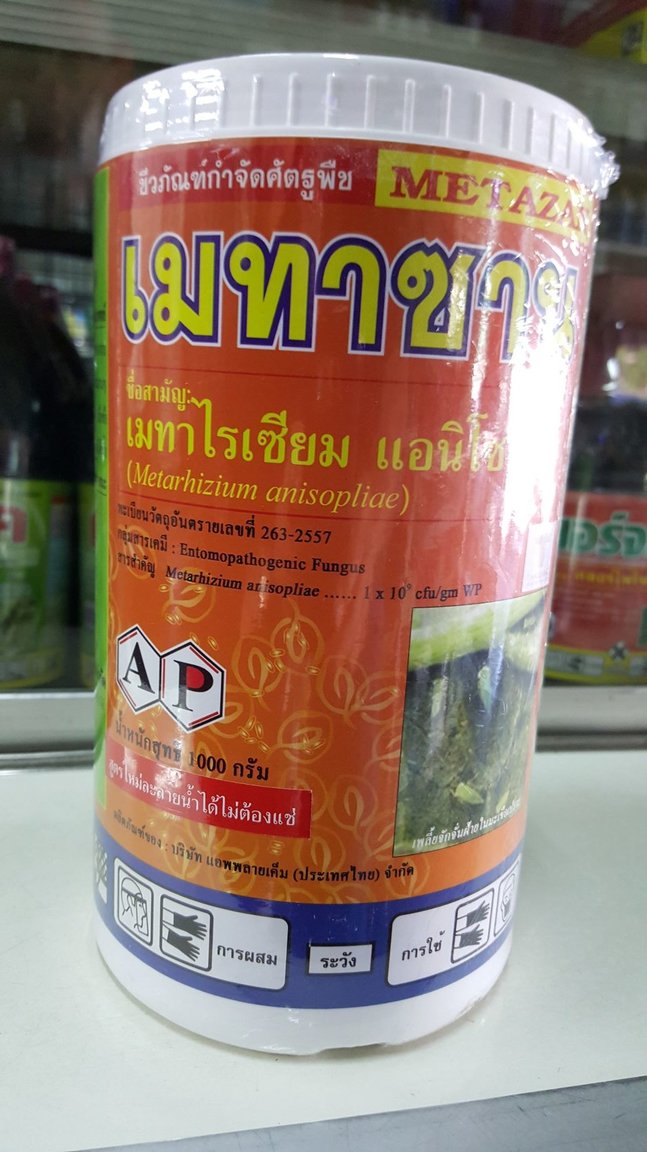
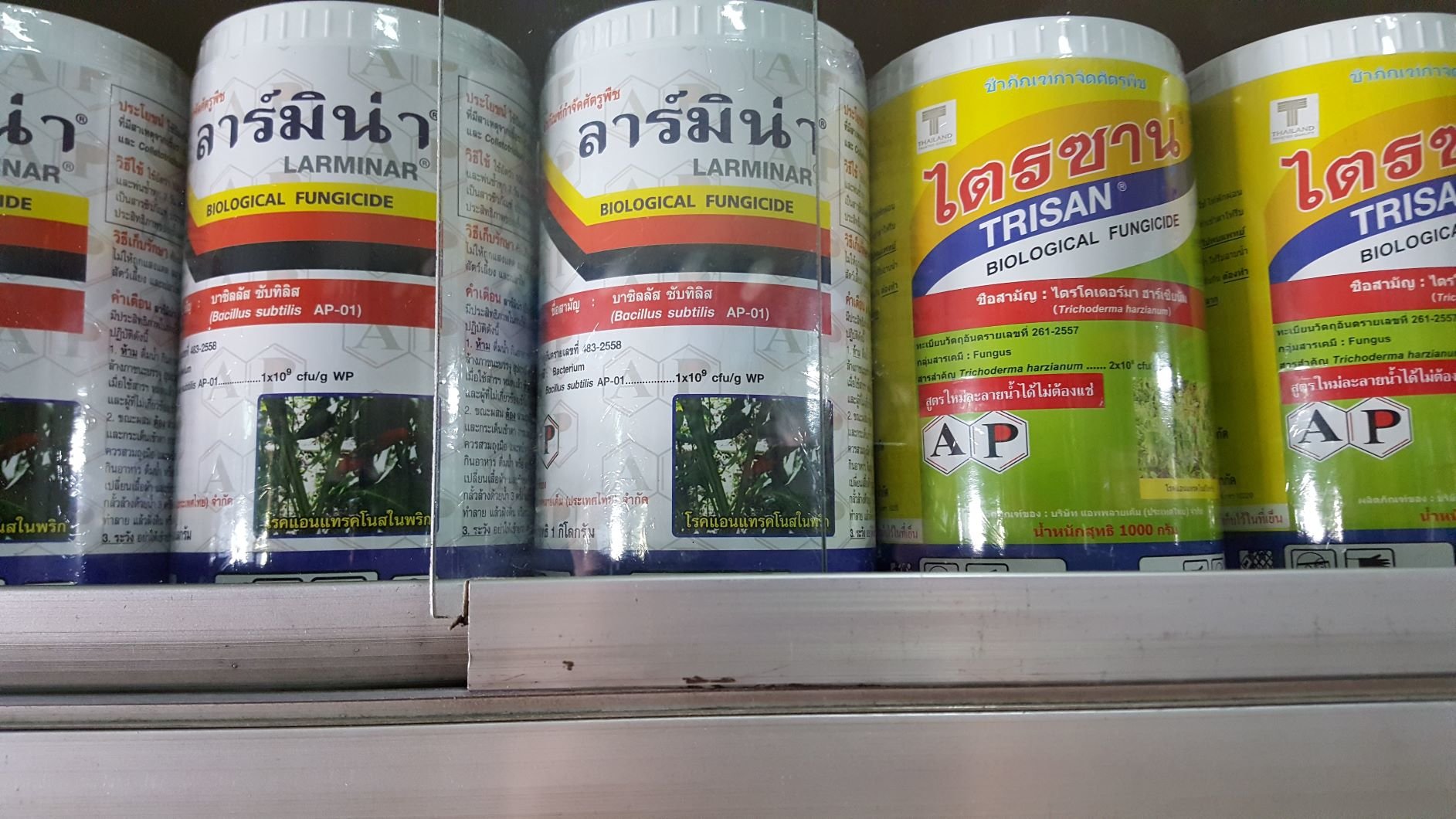
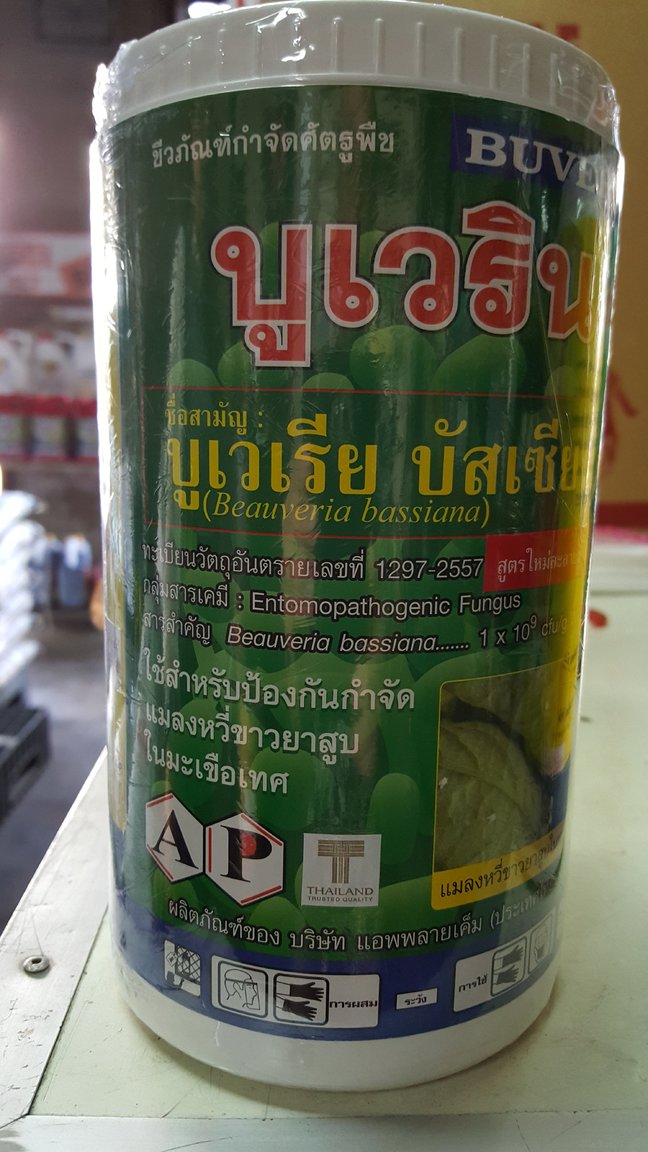
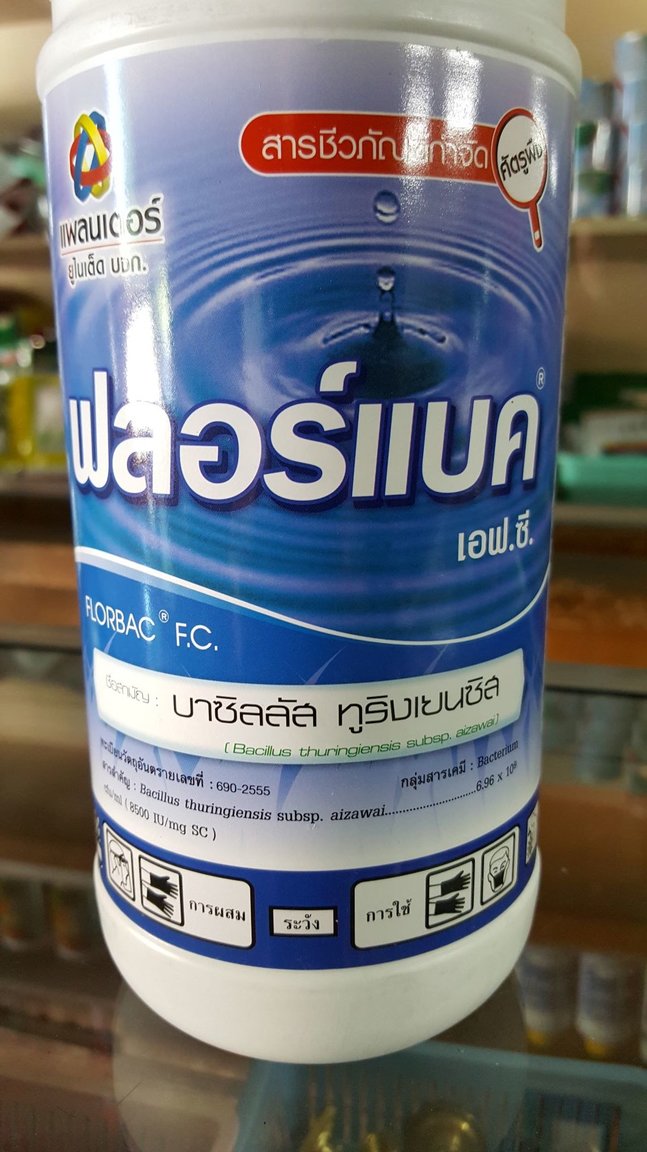
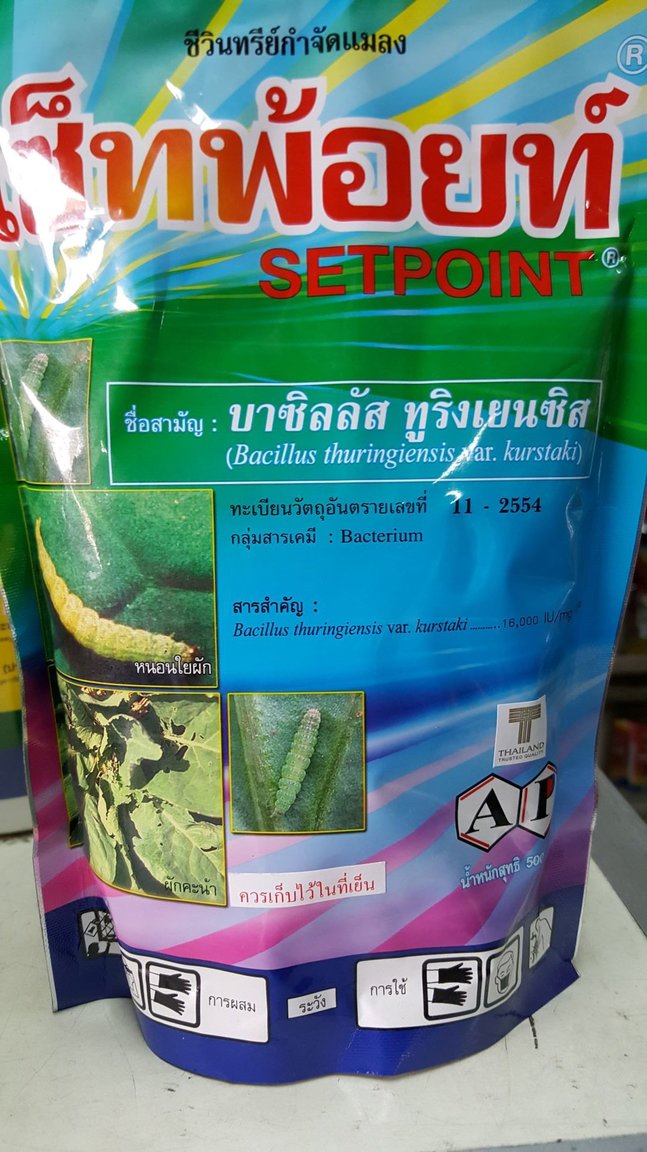
Thai Grapefruit disease
in Farming in Thailand Forum
Posted
Some organic growers use ta-kite (lemongrass) in a decoction with wood vinegar solution, as an easy and cheap contact spray and a few days residual repellent.
From the photos, your trees appear young and they may not be fruiting yet. But consider that if they are flowering, by spraying with any concentrated solution, you run the risk of damaging flowers and disrupting pollination. I know it's disturbing to see leaf distortions from pest activity, but you should determine how much damage is really there, what percentage of the foliage is affected. If not extensive, and the pest is not a killer, and does not affect flowers and fruit, then maybe don't panic for cosmetic reasons. A tree with a minimal percentage of distorted leaves can still photosynthesize and produce flowers and fruit. Spraying, even with botanicals, can negatively affect pollinators, beneficial pest predators and parasitoids. So weigh all the factors.